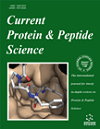
Full text loading...
We use cookies to track usage and preferences.I Understand

Mitochondria are organelles in eukaryotic organisms with an electron transport chain consisting of four complexes (i.e., CI, CII, CIII, and CIV) on the inner membrane, which have functions such as providing energy, electron transport, and generating proton gradients. NADH dehydrogenase type 2 (NDH-2), widely found in bacterial, plant, fungal and protist mitochondria, is a nonproton-pumping single-subunit enzyme bound to the surface of the inner mitochondrial membrane that partially replaces NDH-1. NDH-2 has a crucial role in the energy metabolism of pathogenic microorganisms, and the lack of NDH-2 or its homologs in humans makes NDH-2 an essential target for the development of antimicrobial drugs. There is a wide variety of pathogenic microorganisms that invade the human body and cause diseases; therefore, more and more inhibitors targeting NDH-2 of different pathogenic microorganisms continue to be reported. This paper first reviews the structure and function of NDH-2 and summarizes the classification of compounds targeting NDH-2. Given the relative paucity of inhibition mechanisms for NDH-2, which has greatly hindered the development of targeted drugs, the article concludes with a summary of two possible mechanisms in action: allosteric inhibition and competitive inhibition. This review will provide theoretical support for the subsequent molecular design and modification of drugs targeting the pathogenic microorganism NDH-2.

Article metrics loading...

Full text loading...
References


Data & Media loading...